Expedition of a special purpose. Transfer of destroyers from the Baltic to the Pacific Fleet
Exactly 85 years ago, on September 24, 1936, warships entered Provideniya Bay in the Anadyr Bay, being transferred from the Baltic to the Pacific Fleet. The escort of two destroyers entered historyas Special Purpose Expedition No. 3. The uniqueness of the secret expedition was that it became the first successful escort of warships from the Baltic to the Pacific Fleet along the Northern Sea Route in one navigation.
Special expeditions
Expeditions of a special purpose (EON) is a general name for a whole series of operations, which are long-term transitions of ships of the Soviet Navy from one fleet another. These operations were actively carried out both in the pre-war years and during the Great Patriotic War and even after its completion.
All expeditions were numbered, their formation took place on the basis of orders from the country's top military leadership and the fleet.
The first expedition, named EON-1, was successfully completed in 1933. Expeditions EON-1 and EON-2 consisted in the transfer of warships from Kronstadt to Murmansk along the White Sea-Baltic Canal, which had just been built by that time.
Destroyers, patrol ships and submarines were transferred to the north of the country, where the process of creating the Northern Fleet was underway, at that time still the Northern Sea Flotilla, formed only on June 1, 1933.
EON-3 became the first expedition to transfer warships from the Baltic to the Pacific Fleet.
Special expeditions have been going on for over 20 years. The last of them were carried out already in the mid-1950s. So, as part of the EON-66 expedition, which became the most massive in history, in June-September 1956, 45 ships of various classes were transferred to the Far East, including two cruisers of the 68bis project: "Alexander Suvorov" and "Admiral Lazarev".
The importance of escorting warships along the Northern Sea Route
The active development of the Northern Sea Route (NSR) went on throughout the 1930s. The cruises of the icebreaking steamer Sibiryakov in 1932 and the unsuccessful expedition of the Chelyuskin in 1933 went down in history. Trapped in the ice, the Chelyuskin eventually sank in the Chukchi Sea, and the rescue of its crew members became a real epic, which was widely covered in the media and presented the country with the first Heroes of the Soviet Union.
In turn, the wiring along the NSR of warships in 1936 remained unknown to a wide audience for a long time. The operation to transfer two destroyers from the Baltic to the Pacific Fleet was classified and very difficult.
In 1936, the fire of the future World War II had already flared up in the world. In Europe, the civil war began in Spain, Germany sent troops to the Rhineland, Italy fought with Ethiopia. It was also restless in the Far East, where military operations between the troops of the Republic of China and Japan periodically took place since 1931, in 1937 they will develop into a full-scale Sino-Japanese war.
In these conditions, the USSR sought to strengthen its military presence in the troubled regions near its borders. For this in the Far East it was necessary to have a combat-ready fleet. But in the 1930s, the Soviet Union simply did not have an adequate shipbuilding industry in this region that would allow the Pacific Fleet to be replenished with new ships.
Under these conditions, the only way to replenish the Pacific Fleet was to transfer warships from other fleets. In 1936, for the first time in history from the Baltic to Vladivostok, two warships were managed in one navigation. These were the destroyers Voikov and Stalin. Their escort by the Northern Sea Route went down in history as Special Purpose Expedition No. 3.
Members of the EON-3 expedition
The expedition to escort two destroyers from the Baltic to the Pacific Ocean was quite large-scale and representative. But the two main characters were the warships. The destroyers Stalin and Voikov were transferred to the Pacific Fleet. These were the Novik-class destroyers, which were one of the most successful projects of the warships of the Russian Imperial Navy.
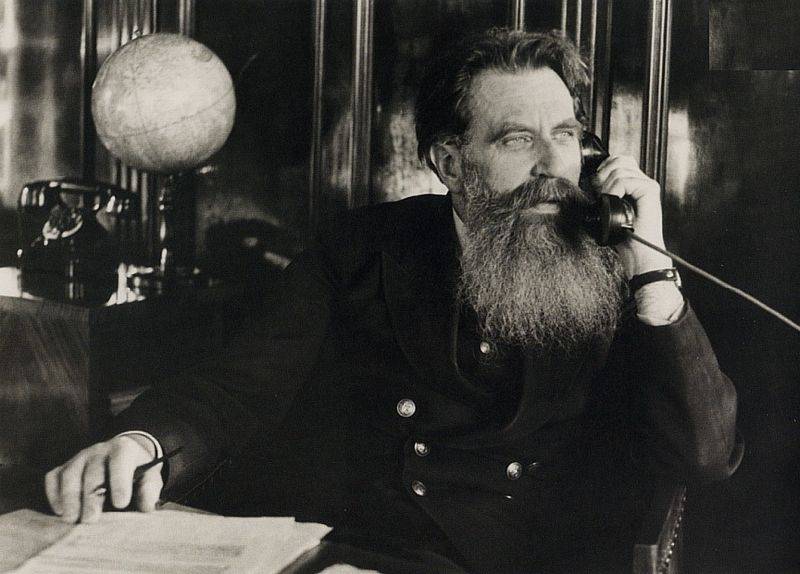
Otto Yulievich Schmidt, photo 1936, wikimedia.org
Destroyers of the Novik class were actively built before the First World War and managed to take part in naval battles, including fought in the Baltic. The ships turned out to be very successful, after the end of the First World War and the Civil War in Russia, they remained in service with the Soviet fleet and were repeatedly modernized, in particular by strengthening anti-aircraft weapons.
In total, up to 3 ships took part in the EON-14 expedition. In addition to destroyers, full-fledged icebreakers were included in the expedition, taking into account the experience of the Sibiryakov and Chelyuskin campaigns. These were the icebreakers "Ermak", "Litke", "Krasin", "Lenin", the ice-going steamer "Sadko". In addition, tankers Maikop and Anadyr, transport Lok-Batan and other vessels took part in the expedition.
Not only naval sailors, but also Soviet scientists and polar explorers, included in EON-3, took part in the conduct of warships by the Northern Sea Route. Was actively involved in pilotage of ships and polar aviation... A group of Anatoly Alekseev's planes was directly involved in studying the ice situation along the route of the expedition.
The expedition was commanded by Captain 1st Rank Pyotr Evdokimov. He was an experienced officer who received a naval education back in tsarist Russia. At the same time, the sailors did not have real experience in performing such ice voyages, so the famous scientist, mathematician and polar navigator Otto Yulievich Schmidt was made the head of the expedition.
At that time, any schoolchild in the country knew the name of Schmitd. All significant Soviet Arctic expeditions of that time were directly connected with his name. He took part in the voyages of the icebreaking steamer Sibiryakov and the steamer Chelyuskin. By the time of EON-3, Otto Schmitd headed the Main Directorate of the Northern Sea Route.
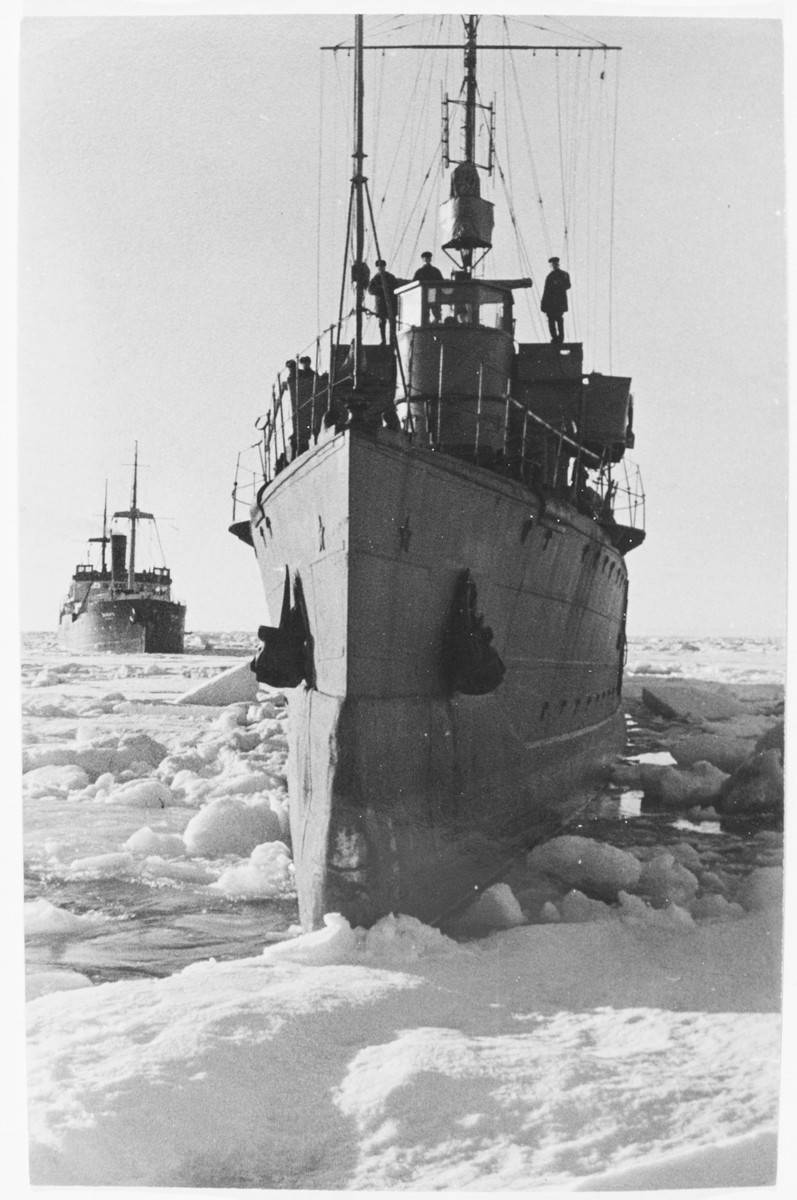
Ships of the EON-3 expedition, photo: geroisevera.ru
To help the captains of the destroyers Stalin (Viktor Obukhov) and Voikov (Maxim Sukhorukov), experienced polar captains of the civilian fleet, Pavel Milovzorov and Nikolai Nikolaev, were identified. They were all experienced sailors. Nikolaev was a hereditary sailor, the son of the famous polar captain Mikhail Nikolaev. Milovzorov had vast experience in sea work. He became a long-distance navigator back in 1899, and made his first Arctic voyage in 1911 on the Kolyma steamer.
The personnel of the expedition ensured its successful completion. On July 29, 1936, the destroyers as part of the EON-3 expedition left Soroka (today Belomorsk) for the White Sea.
At dawn on September 24, 1936, albeit not without incident, the ships arrived at Provideniya Bay, where they were met by the commander of the Pacific Fleet, the 1st rank fleet flagship Mikhail Viktorov. There, in the bay, ships began to mount weapons, which were separately transported on the expedition's transport.
What difficulties did the EON-3 participants face?
The task of escorting two destroyers to the Pacific Fleet was assigned to the command of the Baltic Fleet in April 1936. At that time, it was quite difficult, which was confirmed by the severity of the climate, difficult ice conditions, as well as the cruise of the steamer "Chelyuskin", which was crushed by ice and sank.
Until 1936, warships were never transferred from the Baltic to the Pacific Ocean along the Northern Sea Route within the framework of one navigation. In addition to the objective difficulties associated with navigating ships in difficult ice conditions, there was another problem - ensuring the secrecy of the expedition.
EON-3 was a top-secret fleet operation. During the campaign, artillery and torpedo weapons were dismantled from the destroyers, their crew was reduced to a minimum. For reasons of secrecy, their names were removed from the warships, the lifebuoys on the sides were inverted with inscriptions inward. The names of the ships were also removed from the ribbons of sailor's peakless caps.
The EON-3 expedition radiograms were given the code name "Zarya". After the appearance of this code on the air, all northern radio stations were ordered to stop transmitting radio messages. At the same time, the very radio communication between the ships of the expedition was ordered to be reduced to a minimum, it was allowed only in extraordinary circumstances.
It should be noted that the Novik-class destroyers were not designed to operate in such difficult northern navigation conditions; they were not ice-class ships. Therefore, the organizers of the campaign initially had to solve a difficult task in order to protect the thin skin of warships from a possible collision with ice floes.
To protect the hulls of destroyers, engineer Alexander Dubravin proposed a special project to create a wooden-metal "coat", which was supposed to keep the hulls of the ships intact during a long cruise in the ice.
In addition to the purely military goal of strengthening the combat capabilities of the Pacific Fleet, the expedition also performed civilian missions. The composition of the expedition and the number of ships involved made it possible to solve simultaneously the issues of supplying the northern regions of the USSR with various economic cargo. First of all, ports and bases located on the Northern Sea Route.
The EON-3 campaign was very important. He proved the possibility of escorting warships to Vladivostok and other ports of the Far East by the northern route. Later, before the start of the Great Patriotic War, several more submarines will move to the Pacific Fleet from the Baltic. And already in 1942, the reverse process will begin, when warships, which will be more needed in the northern theater of operations, will go to the Northern Fleet from the Far East along the NSR.
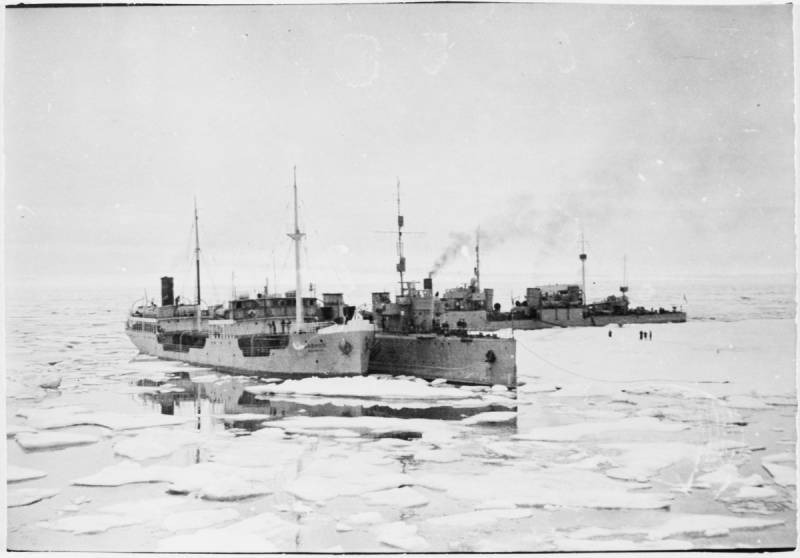
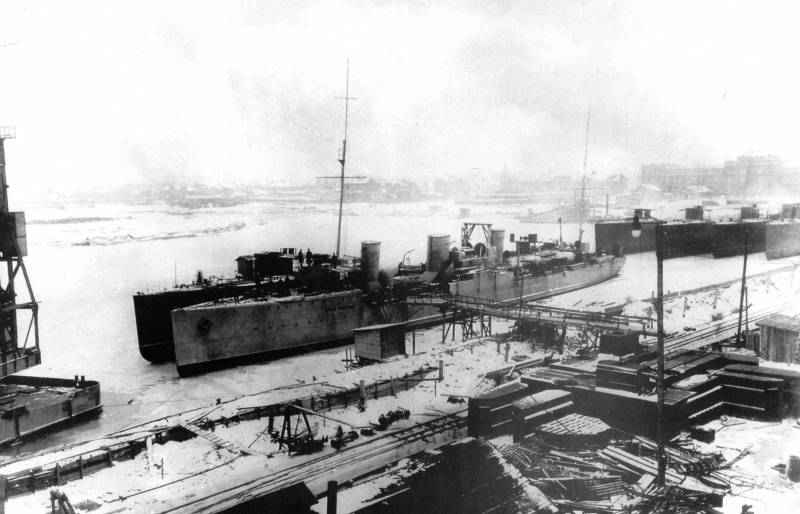
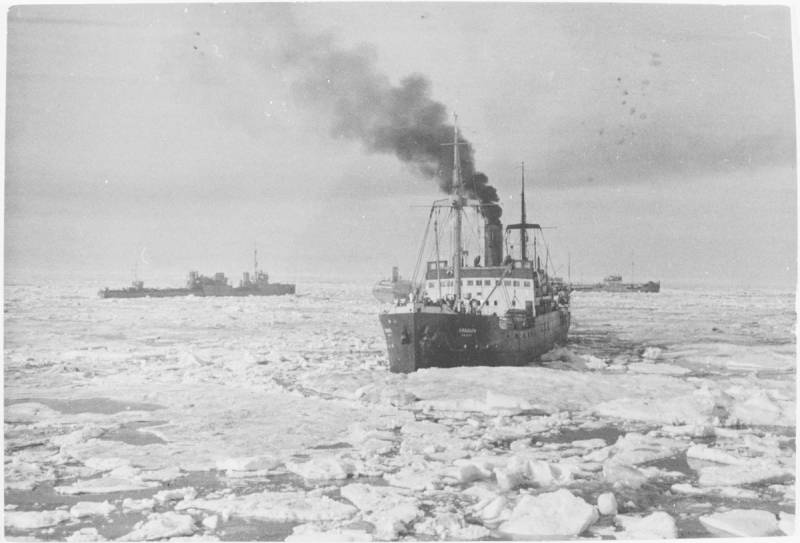
Information